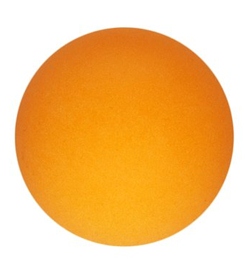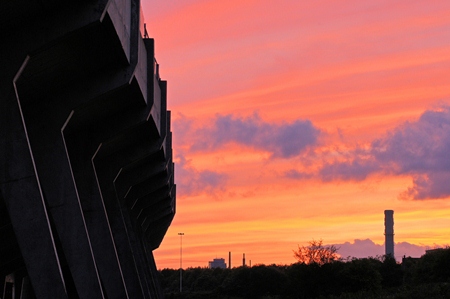Everyone who embarks on the study of photography meets a definition of photography as “painting with light”. Whilst you certainly need light to be able to record an image, lighting is not the be all and end all of photography. In fact, too much lighting is detrimental for any outstanding image.
So, you need light to be able to record an image, but you need “dark” (otherwise known as “shadow”), to give the subject being photographed some form. Using light in all its directions and intensities to illuminate your subject is really only part of the art of photography. The other part is to “paint with dark”.
 Example 1 – Circle or ball?
Example 1 – Circle or ball?
When a young photographer first gets his ‘professional’ lighting equipment, he (or she) tends to flood everything with enormous light levels and from all directions, made possible by the electronic flash. Every part of every subject is totally covered with the light, and the new young photographer is delighted with the fact that there are no dark corners left unlit.
Unfortunately, there is something missing from these types of shots. And that is a certain lack of form or shape. The only contrast in the highly illuminated final photograph relies totally on color. Yellows on blue are very popular under these circumstances. I, too, in my early days, have photographed a model in a yellow dress against a blue doorway. Super shot, but missing something, but at the time I didn’t know exactly what that was.
The item that was missing is the third dimension. On any photograph you get a two dimensional image – height and width. However, the third dimension, depth, is totally missing. This third dimension, the so-called 3D effect can only be produced by some visual trickery, which we call ‘shadow’. It is the shadow which differentiates a circle from a ball, but if you blast the spherical subject with so much light that there is no shadow, the final result has no shape, no depth, no 3D effect (see example 1).
This is why the photographer has to use shadow to give the impression of the third dimension. This makes a 2D image look like a 3D one, and is done by careful manipulation of both the lighting and the shadows.
 Example 2 – Extreme light and shadow.
Example 2 – Extreme light and shadow.
Take the outdoors situation, for example. We always suggest to the novices that they should photograph early in the morning or late in the afternoon. Do not shoot in the middle of the day. One reason for this is because in the early mornings and late afternoons the lighting (from the sun) is directional, skimming along the top of the earth’s surface, and makes for plenty of shadow. In the middle of the day, however, the sun is directly overhead and does not make for pleasant shadows, and even landscapes will look flat and featureless. Look at some of the famous landscapes done by Ansel Adams and you will see what I mean. For a photographer, the middle of the day is purely for siestas, not for photography. It does mean that you get up at some dreadful early hours in the morning to drive to the location, but the end result is worth it (((see example 2).
One of the problems with new digitals is the powerful on-camera flash. This pops up at any time and overpowers the natural lighting, and being centrally mounted makes for a photograph flooded with light, but no real shadow. If you disable the on-camera flash, you will also get better photographs, other than after sundown, where you need some light source to be able to register an image, but try altering the ISO rating before using flash.




